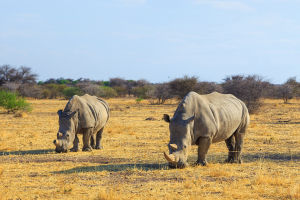Among the ocean’s most enchanting residents, the Megaptera novaeangliae, commonly known as the humpback whale, stands out for its grandeur and captivating behavior.
These massive creatures, often reaching up to 52 feet in length and weighing as much as 40 tons, are a marvel of marine biology and an emblem of oceanic wonder.
Physical Characteristics and Behavior
The humpback whale is renowned for its distinct physical features, including its long pectoral fins, which can be up to one-third of its body length. Their bodies are adorned with tubercles—small, bumpy protrusions—on their heads, which are thought to aid in their unique feeding techniques. These whales are also known for their impressive dorsal fins and a tail fluke that is often marked with distinctive patterns, useful for identifying individuals.
One of the most captivating aspects of the humpback whale is its behavior, particularly its vocalizations and elaborate displays. Known for their complex songs, which can last for up to 20 minutes and be heard for miles underwater, these vocalizations are believed to play a role in mating rituals and social interactions. During the breeding season, male humpbacks use their songs to attract females and communicate with other males.
In addition to their songs, humpbacks are famous for their acrobatic displays. They are often seen breaching, where they launch their massive bodies out of the water, or slapping the surface with their tails and pectoral fins—a behavior thought to be related to communication or play.
Feeding and Migration
Humpback whales are also known for their impressive feeding techniques, most notably the bubble net feeding strategy. In this method, they create a net of bubbles to corral and trap schools of fish, then swim through the concentrated prey with their mouths open. This cooperative hunting technique demonstrates their intelligence and social cooperation.
These whales are migratory, traveling thousands of miles between their feeding grounds in the polar regions and their breeding grounds in warmer tropical waters. This migration is one of the longest of any mammal, showcasing their remarkable endurance and adaptability.
Conservation and Viewing
Despite their resilience, humpback whales face threats from ship strikes, entanglement in fishing gear, and environmental changes. Conservation efforts are crucial in protecting these magnificent creatures and ensuring their populations remain healthy.
For those eager to witness the grandeur of the humpback whale firsthand, whale watching tours offer a unique opportunity. The best times to see these whales vary by location, but many tours operate during the peak migration seasons, typically from December to April in the Southern Hemisphere and from June to September in the Northern Hemisphere.
In summary, the Megaptera novaeangliae, with its immense size, complex behaviors, and impressive migrations, embodies the majestic allure of the ocean. Observing these whales in their natural habitat is a profound reminder of the beauty and complexity of marine life.
Lykkers, as we wrap up our exploration of the majestic humpback whale, we’d love to hear your thoughts on these incredible creatures. Did anything about their behavior or migration strike you as particularly fascinating? Share your impressions and any questions you might have in the comments below! Let’s dive deeper into the wonders of marine life together.


